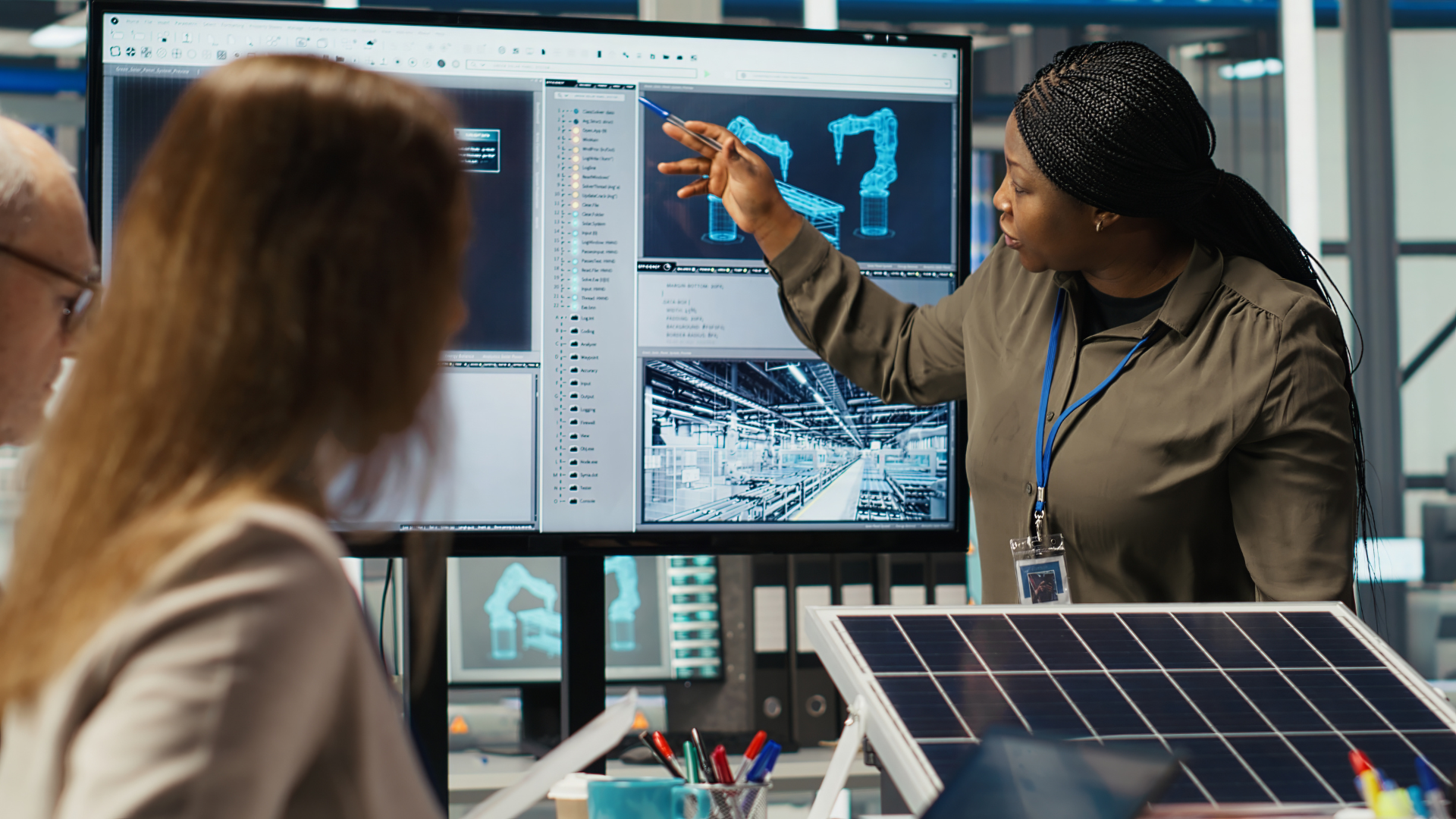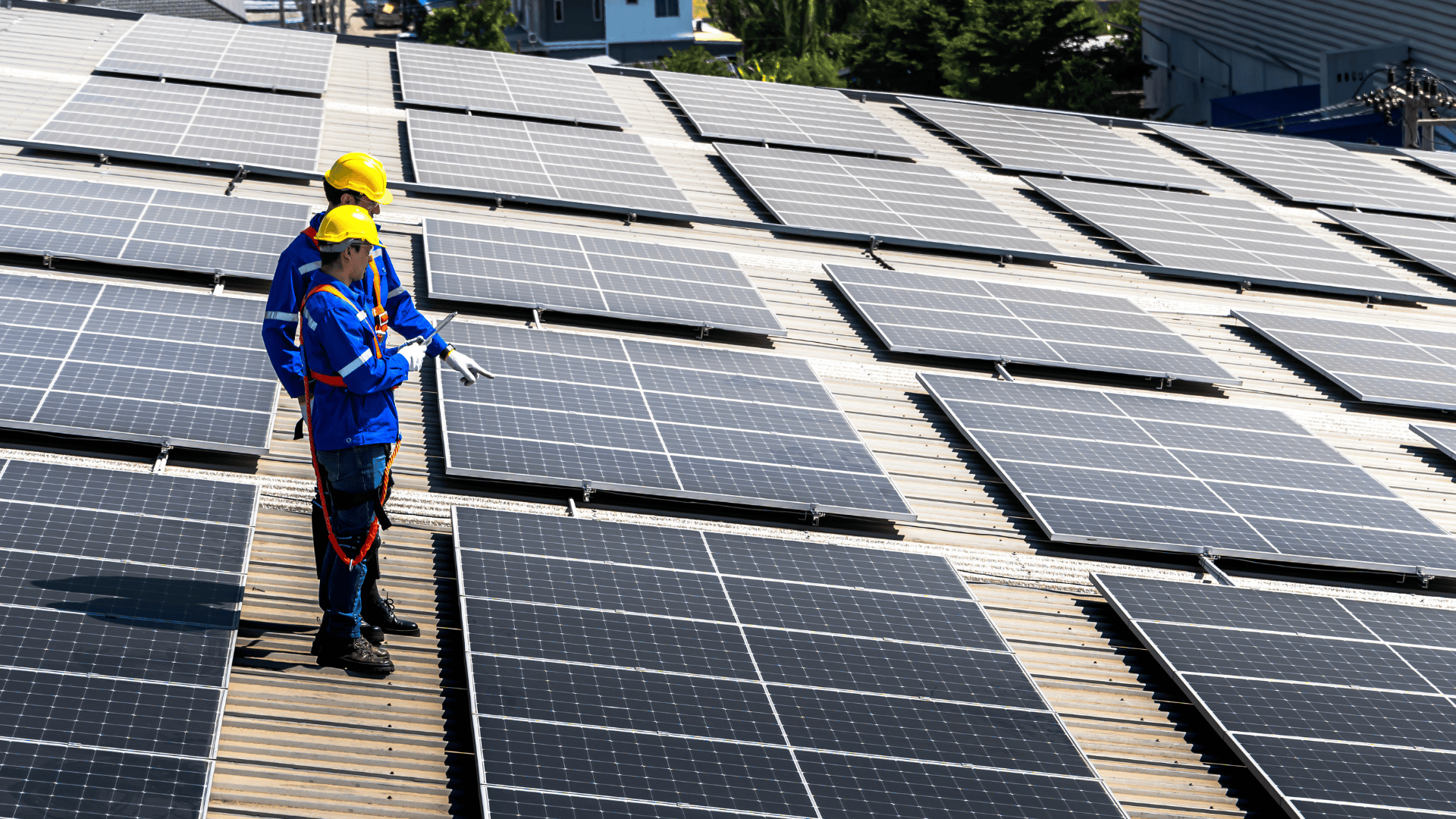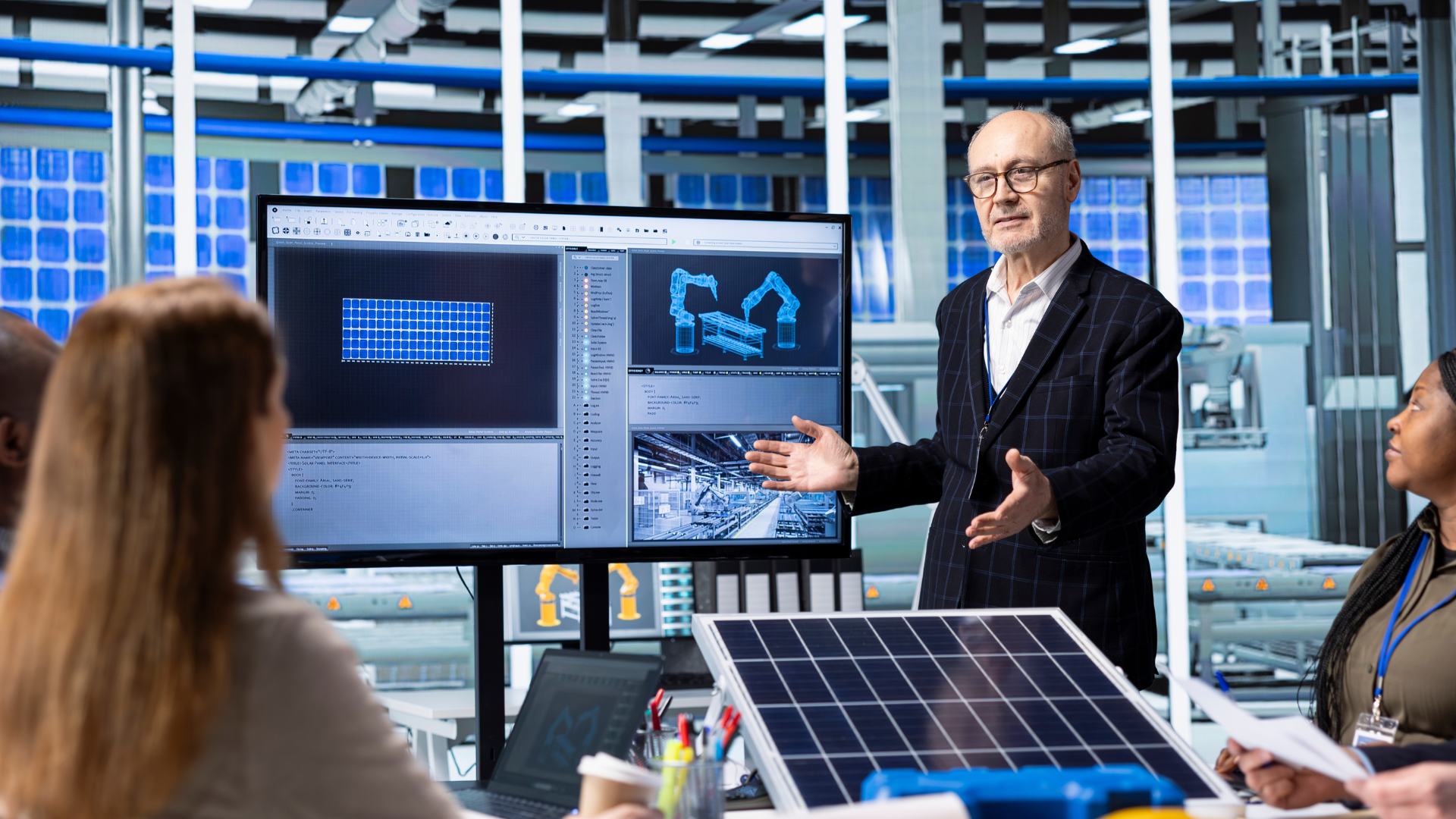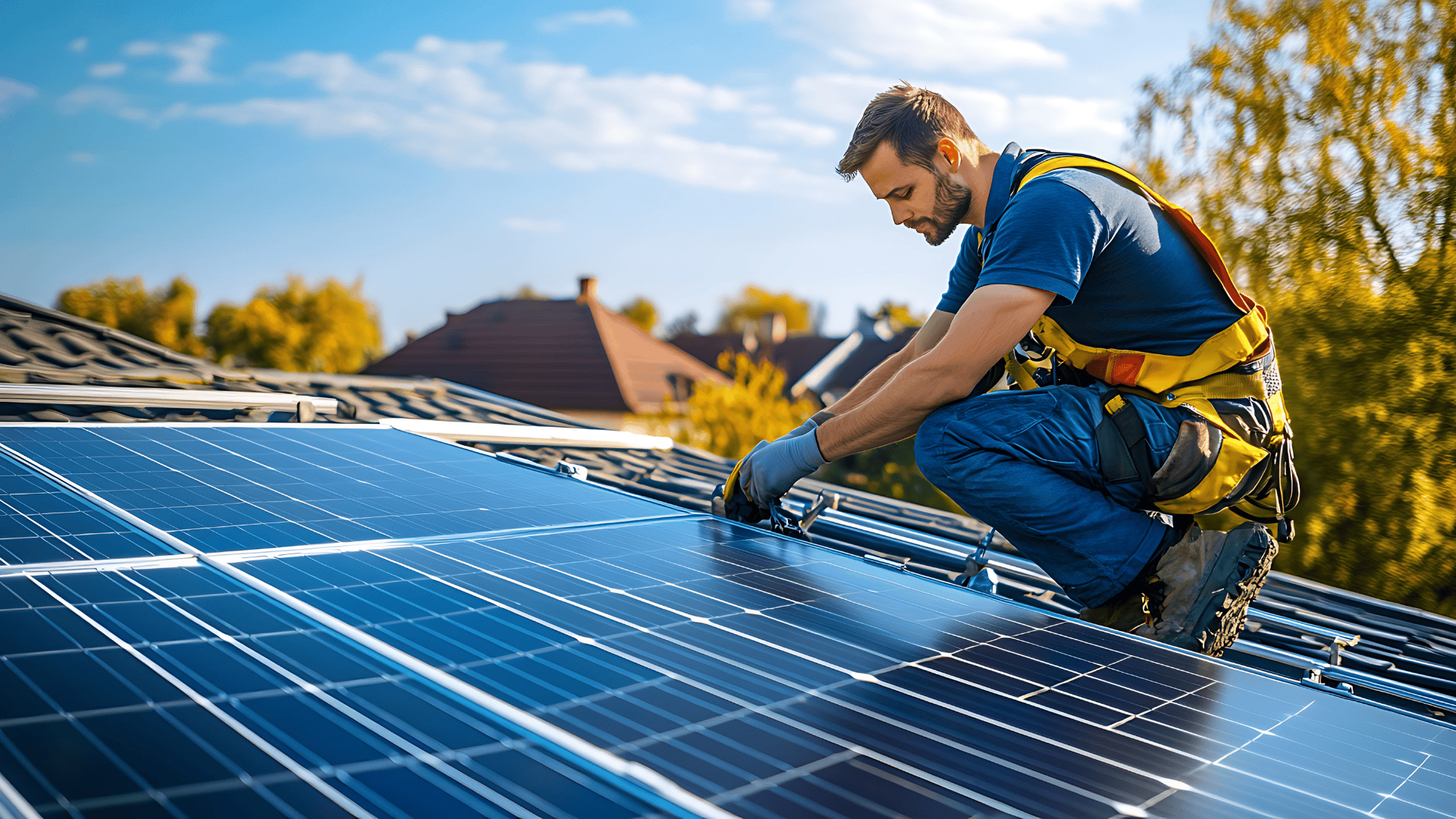The Role of Sustainability in Modern Roofing Practices
January 23, 2025
Modern Roofing Practices
Let’s be real when we think about sustainability, roofing doesn’t always come to mind. But it should! Roofing plays a bigger role in our environment than we might think. The materials we choose, the energy efficiency we build into our roofs, and even how we dispose of old roofing materials all greatly impact carbon emissions, waste, and energy use.
Here’s a fact that’s hard to ignore: Every year, 11-13 million tons of asphalt shingles are taken off roofs in the U.S. Unfortunately, less than 10% of that gets recycled, and the rest 90% ends up in landfills (source: EPA). That’s a huge waste, especially when we could do so much more with sustainable roofing
practices.
We can’t afford to ignore the need for greener, more efficient ways to build. As Sir David Attenborough wisely said, “The truth is, the natural world is changing. And we are totally dependent on that world. It provides our food, water, and air. It is the most precious thing we have, and we need to defend it.”
Roofing is part of that responsibility, and it’s time to rethink how we build and help protect the planet we depend on.
Check out: How Weather Influences the Roofing Market- Ireland?
Key Takeaways
- The Environmental Toll of Traditional Roofing Practices: Excessive Resource Use, Non-Renewable Materials, Increased Carbon Footprint, etc.
- Some Sustainable Modern Roofing Practices include recycled Shingles, Metal Roofing, Green Roofs, Cool Roofs, and Renewable Resources.
- The Future of Sustainable Roofing: Government and Industry Initiatives, The Role of Architects, Builders, and Homeowners
- Why Sustainability in Roofing Matters: Environmental Responsibility, Economic Benefits, Social Impact
- Sunbase helps roofing companies embrace sustainability by reducing wasted materials, automating workflows, and enabling smarter roof replacements.
The Environmental Toll of Traditional Roofing Practices
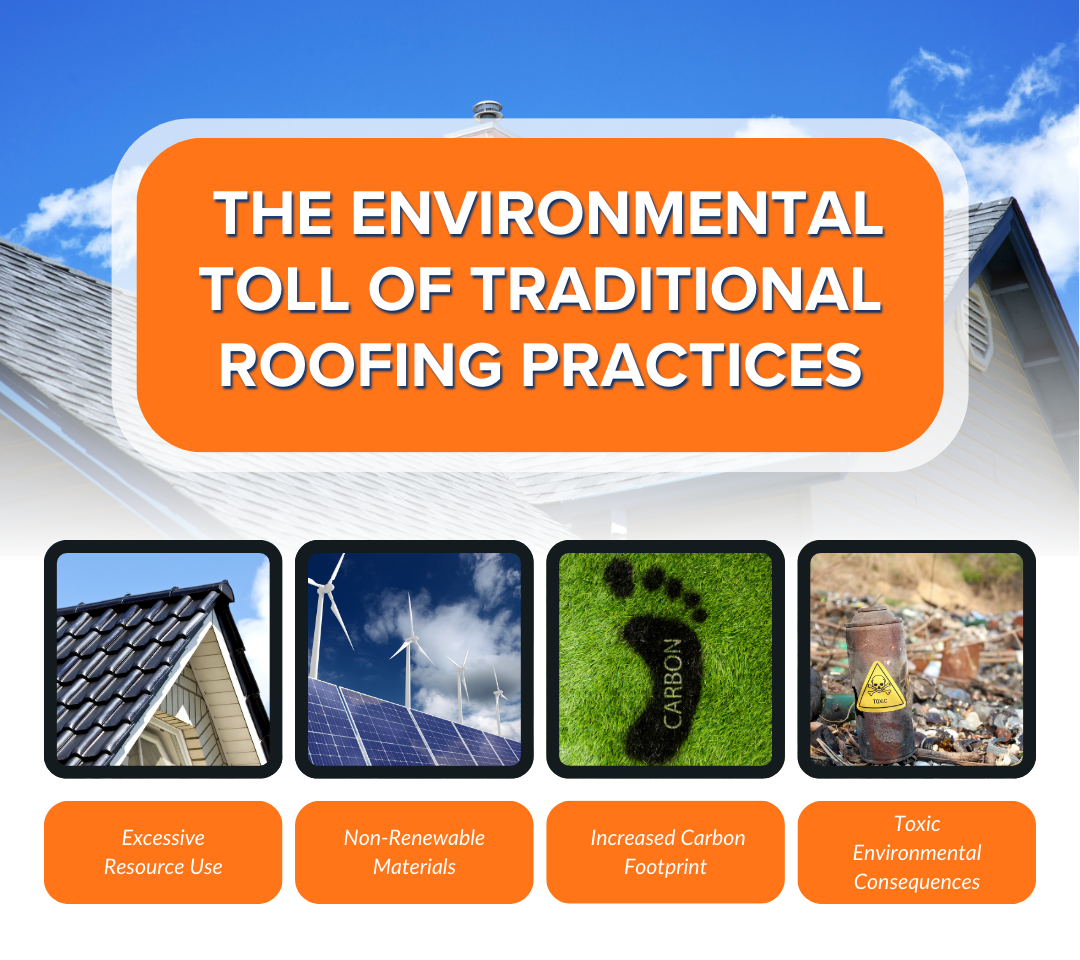
Excessive Resource Use
- Traditional roofing materials (hello, asphalt, and metal) are resource-hungry. To make them, we dig up non-renewable stuff like petroleum and metals. Not only are we taking from the earth, but it’s like a never-ending cycle; we keep using and using while the planet’s supply keeps getting thinner.
- Mining for these materials also causes some serious environmental problems, such as habitat destruction and soil erosion. Ouch!
Non-Renewable Materials
- Traditional roofing uses resources that don’t biodegrade. So when the roof’s life is over, it's not just gone, it's stuck in landfills, taking up space for years or even centuries.
- It’s a bit like buying a product you use once and then throw away... but it doesn’t disappear! So much for sustainable living, right?
Increased Carbon Footprint
- The production of regular roofing materials isn’t just resource-draining, it’s energy-hungry, too. All that energy used to make the stuff? It adds to the carbon footprint!
- And let’s not forget the delivery trucks! Transporting these heavy materials everywhere pumps even more carbon emissions into the air. More trucks mean more pollution. This cycle keeps heating up the planet, which is not exactly what we need right now!
Toxic Environmental Consequences
- Some roofing materials are treated with nasty chemicals, such as lead, arsenic, and weird dyes, to make them weather-resistant. Guess what? These chemicals can leak into the environment, polluting soil, water, and even the air.
- Those toxins also put wildlife and human health at risk. It’s like setting a bad example for the ecosystem, not cool!
So yeah, traditional roofing practices may not be as harmless as they seem. From wasting precious resources to polluting the planet, the environmental toll is huge. But the good news? We can fix it! Let's see how.
Read: Top Roofing Trends to Watch for in 2025
Some Sustainable Modern Roofing Practices
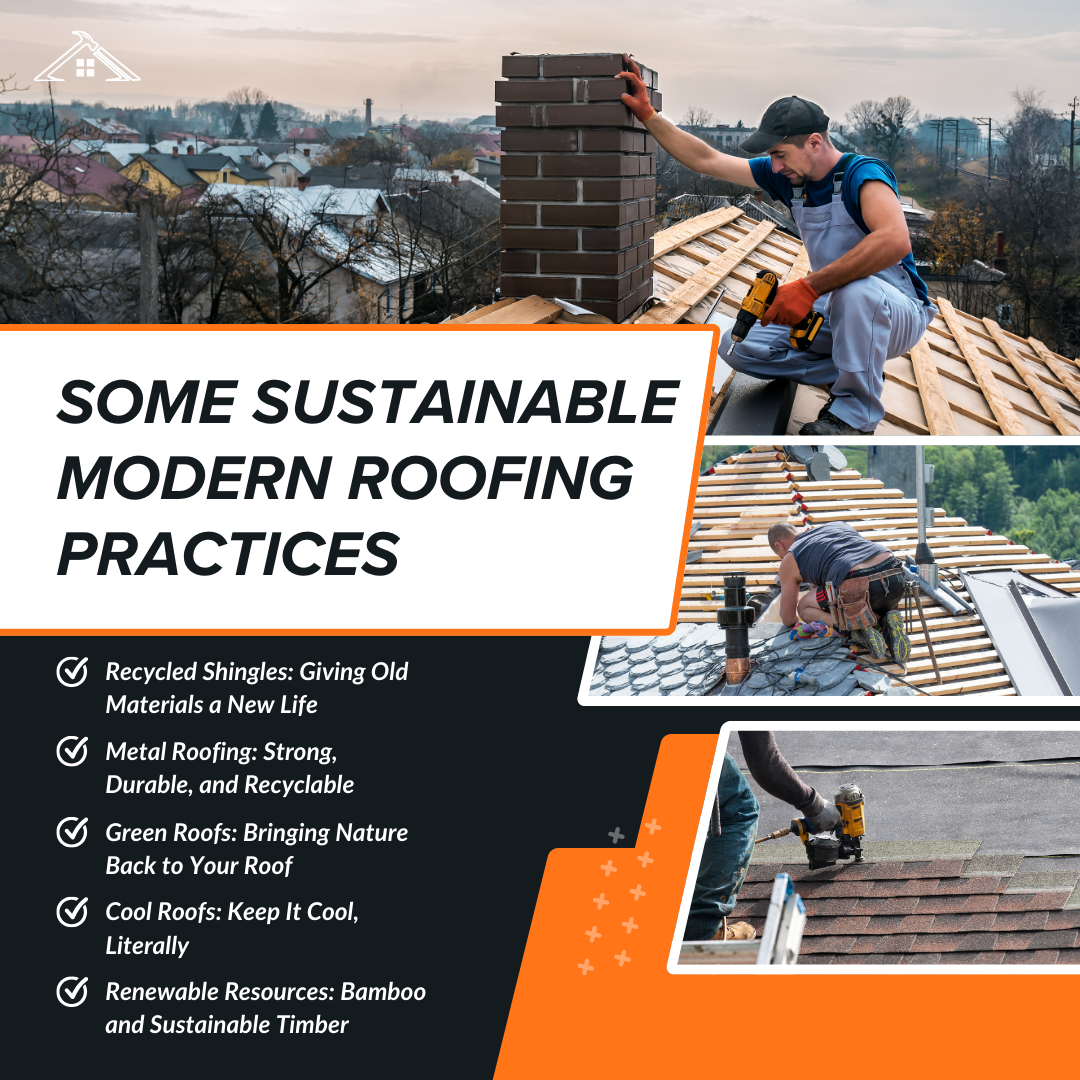
When it comes to roofing, going green isn’t just a part of modern roofing trends; it’s a game changer!
Here are some eco-friendly materials and technologies that are making roofs smarter and better for the environment:
1. Recycled Shingles: Giving Old Materials a New Life
What are they?: These shingles are made from repurposed roofing materials, giving them a second chance at life instead of sending them to a landfill.
Why it’s cool: It's like recycling for your roof! You are reducing waste and the need for new raw materials, keeping the planet lighter and greener.
Bonus: These recycled shingles still provide the same performance as new materials, offering durability and protection with an eco-friendly twist.
2. Metal Roofing: Strong, Durable, and Recyclable
What is it?: Metal roofing is crafted from materials like steel, aluminum, or copper, and the best part? It's fully 100% recyclable!
Why it’s cool: Metal roofs are practically invincible, they last for decades (50+ years!) and withstand extreme weather conditions. Plus, they are lighter, meaning less energy is used for transportation.
Bonus: Not only are they durable, but they reflect sunlight to help keep your home cool in summer, reducing energy use and your carbon footprint. Double win!
3. Green Roofs: Bringing Nature Back to Your Roof
What are they?: Green roofs turn your rooftop into a thriving garden covered with plants and greenery.
Why it’s cool: Beyond looking fantastic, they help absorb rainwater, reduce heat, and even create habitats for wildlife. It’s nature’s way of giving back to your home.
Bonus: Green roofs help reduce the heat island effect in cities, keeping urban areas cooler and more sustainable. They are a win for the environment and your home!
4. Cool Roofs: Keep It Cool, Literally
What are they?: Cool roofs feature reflective materials that bounce heat away from your building instead of absorbing it.
Why it’s cool: Ideal for warm climates, they reduce the need for air conditioning by keeping your home cooler. This lowers your energy bills and helps prevent overheating in cities.
Bonus: They don’t just keep your house cooler, they help lower the overall temperature of your city, fighting against the effects of climate change.
5. Renewable Resources: Bamboo and Sustainable Timber
What are they?: Bamboo (which grows fast) and sustainably harvested timber (wood sourced from responsibly managed forests) are eco-friendly materials that make for beautiful roofing.
Why it’s cool: Bamboo is a renewable superstar that grows rapidly without harming the environment. Timber, when responsibly sourced, can provide durable roofing options.
Bonus: Both materials offer a natural aesthetic while helping the planet by absorbing carbon. They are stylish, eco-friendly roofing choices!
Go Through: Eco-Friendly Roofing Solutions: How To Implement Sustainable Practices?
The Future of Sustainable Roofing
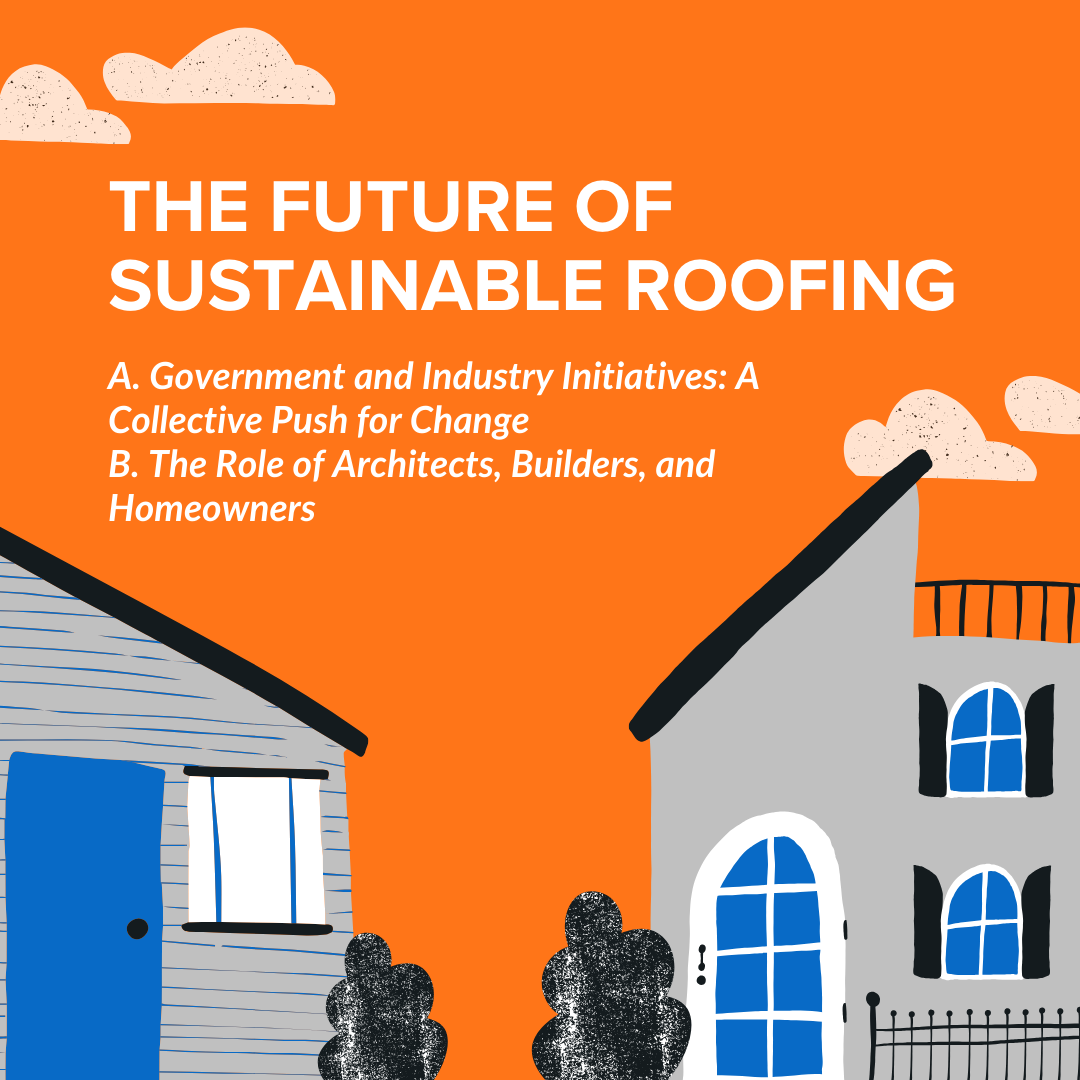
A. Government and Industry Initiatives: A Collective Push for Change
Policies and Incentives
Picture this: You invest in an eco-friendly roof and get rewarded for it. Sounds great, right? That’s the idea behind tax breaks, rebates, and grants for green roofing options like solar, cool, and even green roofs.
These perks make it easier for homeowners and businesses to choose natural materials and energy-efficient roofing systems, making sustainability more accessible and affordable.
Updated Building Codes
Roofs are no longer just about looking good or staying intact. The game has changed. Cities are updating their building codes to require sustainable practices.
Use reflective materials (light-colored roofing, pavements, etc) to fight urban heat or green roofs (partially or completely covered with vegetation) to manage stormwater.
These new standards ensure that eco-friendly roofing systems aren’t just optional, they are essential in modern construction.
Industry Leadership
The roofing industry isn’t sitting on the sidelines, either. Companies are rolling out innovative materials built right into the roof, such as recyclable shingles and solar panels.
Meanwhile, architects and builders craft modern roofing solutions that balance energy efficiency with style and functionality.
It’s an all-hands-on-deck effort, and the results are pushing the roofing system toward a greener future.
B. The Role of Architects, Builders, and Homeowners
Architects and Builders
These are the folks turning sustainable ideas into reality. They work with natural materials like bamboo, solar tiles, and reflective coatings to design roofing systems that check all the boxes: eco-friendly, durable, and visually stunning.
Their expertise ensures modern roofing options don’t just meet environmental standards, but they exceed them.
Homeowners
Believe it or not, homeowners are the driving force behind sustainable roofing. Every time someone chooses a living roof or invests in energy-saving tech, they are helping reshape the industry.
By opting for modern roofing options, homeowners are upgrading their homes and sending a clear message that sustainability matters.
Why Sustainability in Roofing Matters?
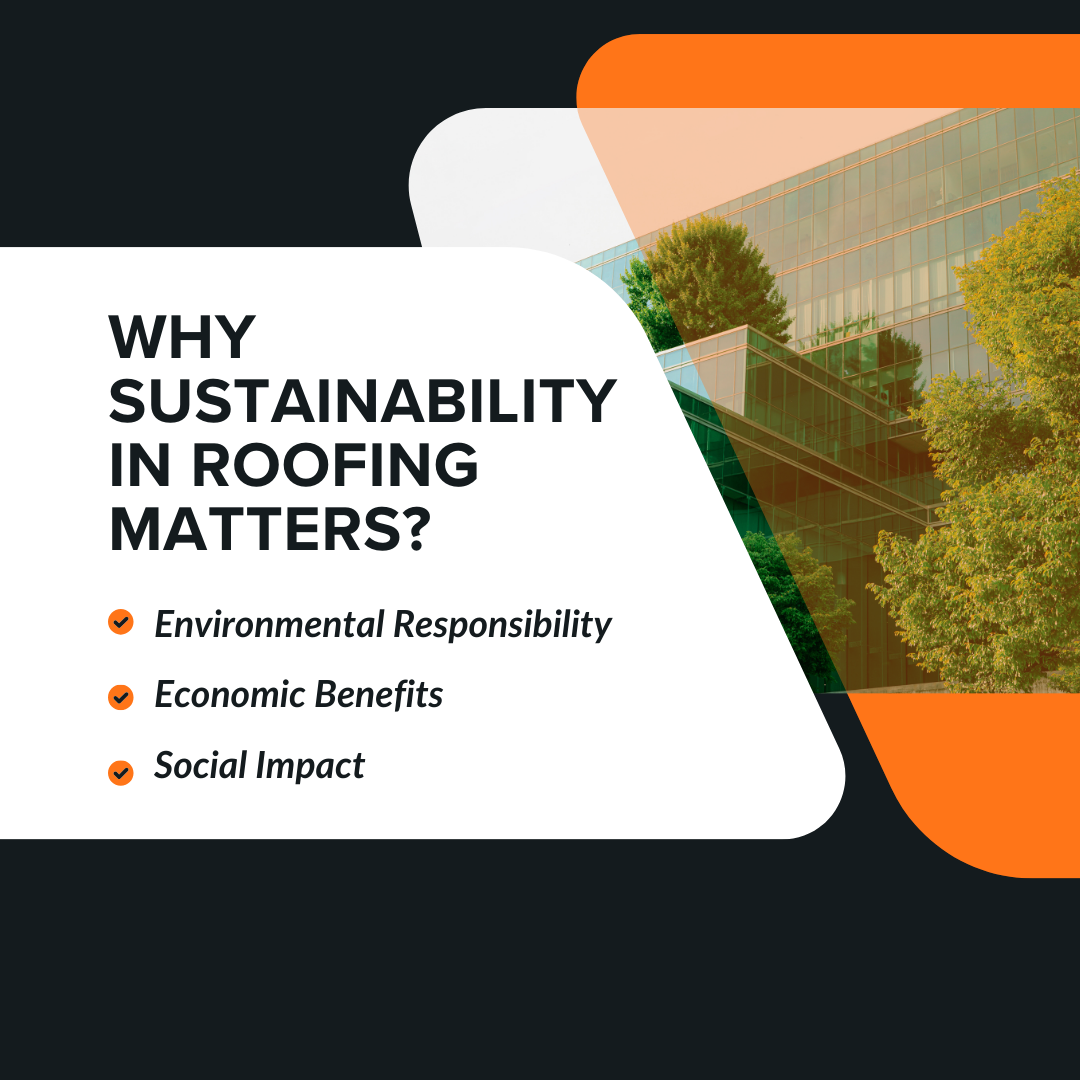
1. Environmental Responsibility
Did you know the construction industry is a massive player in shaping our planet's future? Roofing, in
particular, contributes to sustainability goals by choosing materials and practices that go easy on the Earth.
Global Impact: Roofing contractors can lead the charge by using eco-friendly materials, reducing waste, and even installing green roofs that help cities breathe better.
It’s about thinking beyond today and building a planet where future generations can thrive.
Lifecycle Thinking: Imagine roofing materials that don’t just serve a purpose today but can be recycled or repurposed tomorrow.
From manufacturing to disposal, considering the entire lifecycle of materials means less waste and a cleaner planet.
2. Economic Benefits
Here’s where sustainability gets exciting: It’s good for the planet and your wallet.
Energy Efficiency Pays Off: Cool roofs and high-quality insulation reduce energy bills and make homes and businesses more comfortable.
Think of it as an investment that keeps paying you back, month after month.
Waste Reduction Saves Money: Recycling old roofing materials and reusing what you can is not only environmentally smart but also financially sound.
Fewer materials sent to landfills mean lower disposal costs and a more efficient bottom line.
3. Social Impact
Sustainability is about creating healthier, happier spaces for everyone.
Healthier Homes: Using non-toxic, eco-friendly materials means cleaner air and a safer environment for your family, employees, or tenants.
No one wants a roof that off-gasses harmful chemicals!
Better Living Conditions: A well-insulated, sustainable roof does more than keep heat or cold out, it makes your space more livable.
And let’s not forget the ripple effect: less energy use means less pollution, which benefits communities everywhere.
Learn more on Sustainability: Sustainability and Profitability: Balancing Goals in the Solar Industry
Role of Sunbase in Modern Roofing
Sunbase is all about making sustainability in roofing practical and achievable. Helping contractors work smarter, not harder, reduces wasted time, materials, and energy.
Think about it: accurate roof measurements mean no excess material, automated workflows save paper and effort, and remote management reduces unnecessary travel. It’s like giving roofing pros the tools to do their best work while keeping things eco-friendly.
Sunbase is quietly championing greener practices that benefit everyone, from contractors to the planet.
Conclusion
Sustainability in roofing is not only the right thing to do but also smart. It’s about creating roofs that protect not only a building but also the planet.
With advancements in roofing technology, roof replacement can be more eco-friendly than ever. By using sustainable materials, reducing waste, and improving energy efficiency, we are shaping a future where roofs do more than just sit above our heads.
It’s a win for the environment, your wallet, and everyone around you. So, next time you are thinking about a roof replacement, consider how your choice can make a positive impact!
About Sunbase
Ready to raise the bar and the roof on sustainability? Sunbase is here to help you lead the charge with eco-friendly practices and smarter roofing solutions. Start making an impact today!
Frequently Asked Questions
Q1. How can technology help roofing companies become more sustainable?
Ans. Sunbase’s roofing software helps businesses track and manage energy-efficient modern roofing materials, reduce errors with precise measurements, and boost productivity, making it easier to embrace sustainability while improving efficiency and profitability.
Q2. Can sustainable roofing practices actually improve customer satisfaction?
Ans. Absolutely! Homeowners appreciate eco-friendly and energy-efficient roofing solutions. With Sunbase, roofing contractors can highlight sustainability in their proposals and operations, showing customers they care about quality and the planet. It’s a win-win for everyone!
I agree to receive marketing messaging from Sunbase at the phone number provided above. I understand data rates will apply, and can reply STOP to OPT OUT.
Company
Industries
Features
Copyright ©2021
Terms of Service |
Privacy Policy


